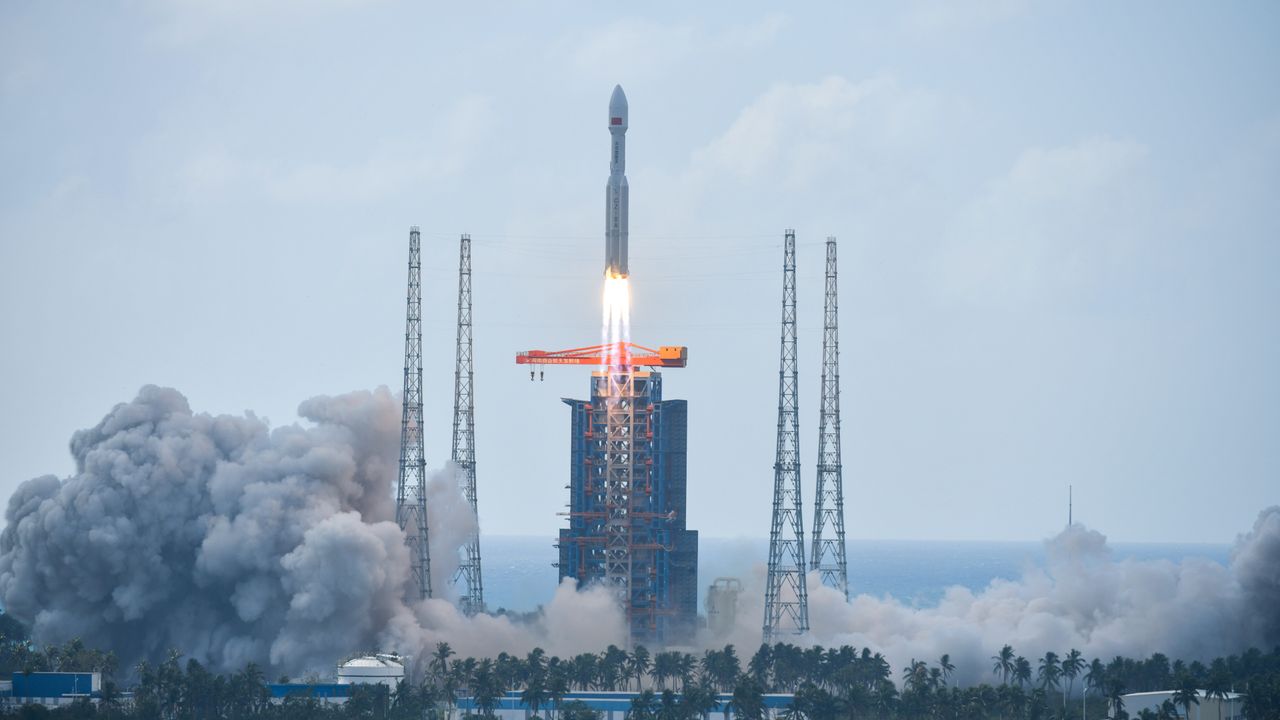Science
China Celebrates 600th Long March Rocket Launch with New Satellites

China marked a significant milestone on October 15, 2025, with the launch of its Long March 8A rocket, commemorating the 600th mission in the Long March rocket series. The rocket lifted off from the Wenchang Space Launch Center located on Hainan Island at 9:33 p.m. EDT (01:33 GMT, 09:33 a.m. local time on October 16). This mission successfully deployed a new batch of satellites for the Guowang broadband network, further expanding China’s capabilities in satellite communications.
The journey of the Long March rocket family began on April 24, 1970, when its inaugural flight sent China’s first satellite, Dong Fang Hong 1, into orbit. Over the past 55 years, China has developed more than 20 different variants of the Long March rockets, with 16 currently active, according to China Daily. The frequency of launches has notably increased, reflecting China’s growing ambitions in space.
According to China Daily, it took 37 years for the Long March family to complete its initial 100 launches. The subsequent milestones were achieved at an accelerating pace: the second 100 launches were completed in just 7.5 years, while the third and fourth groups reached their respective benchmarks in over four years and two years and nine months. The fifth set of 100 missions was accomplished in two years, and the latest 100 launches were completed in just one year and 10 months. The overall success rate of the Long March rockets stands at approximately 97%.
While the Long March series is a remarkable achievement, it does not hold the record for the most flights of any rocket family. That title belongs to the Soviet/Russian Soyuz line, which has conducted over 1,700 missions since its introduction in November 1966. Other notable rocket families, such as the Soviet Union’s Kosmos series and the American Atlas series, have also reached the 600-flight milestone. Meanwhile, SpaceX‘s Falcon rockets are approaching this benchmark, with over 570 launches to date and a notable 130 Falcon 9 launches in the current year alone.
Guowang Network Expansion
The launch on Wednesday was dedicated to the deployment of the 12th group of satellites for the Guowang network, which is envisioned as a vast broadband megaconstellation in low Earth orbit (LEO). This network, operated by China Satnet, aims to consist of approximately 13,000 satellites, contingent on successful deployment. Each group of satellites typically comprises eight to ten individual spacecraft.
In parallel, another Chinese satellite constellation known as Qianfan (“Thousand Sails”) is also in development, anticipated to feature a similar number of satellites. These projects echo the successful model established by SpaceX’s Starlink network, which has more than 8,600 operational satellites and continues to expand rapidly, with the majority of this year’s Falcon 9 launches dedicated to Starlink missions.
The ongoing advancements in satellite technology and deployment reflect a broader trend in global communications, driven by the demand for high-speed internet access. As China continues to pursue its ambitions in space, the Long March rocket family remains a cornerstone of its efforts, showcasing the nation’s growing capabilities in aerospace technology and satellite communications.
-

 Science2 weeks ago
Science2 weeks agoIROS 2025 to Showcase Cutting-Edge Robotics Innovations in China
-

 Politics2 weeks ago
Politics2 weeks agoJudge Considers Dismissal of Chelsea Housing Case Citing AI Flaws
-

 World2 weeks ago
World2 weeks agoBravo Company Veterans Honored with Bronze Medals After 56 Years
-

 Top Stories2 weeks ago
Top Stories2 weeks agoIndonesia Suspends 27,000 Bank Accounts in Online Gambling Crackdown
-

 Lifestyle2 weeks ago
Lifestyle2 weeks agoStone Island’s Logo Worn by Extremists Sparks Brand Dilemma
-

 Health2 weeks ago
Health2 weeks agoStartup Liberate Bio Secures $31 Million for Next-Gen Therapies
-

 Sports2 weeks ago
Sports2 weeks agoMel Kiper Jr. Reveals Top 25 Prospects for 2026 NFL Draft
-

 Health2 weeks ago
Health2 weeks agoTop Hyaluronic Acid Serums for Radiant Skin in 2025
-

 World2 weeks ago
World2 weeks agoHoneywell Predicts Record Demand for Business Jets Over Next Decade
-

 Lifestyle2 weeks ago
Lifestyle2 weeks agoMary Morgan Jackson Crowned Little Miss National Peanut Festival 2025
-

 Politics2 weeks ago
Politics2 weeks agoNew Jersey Voters Urged to Register Ahead of November Election
-

 Sports2 weeks ago
Sports2 weeks agoYamamoto’s Mastery Leads Dodgers to 5-1 Victory in NLCS Game 2









